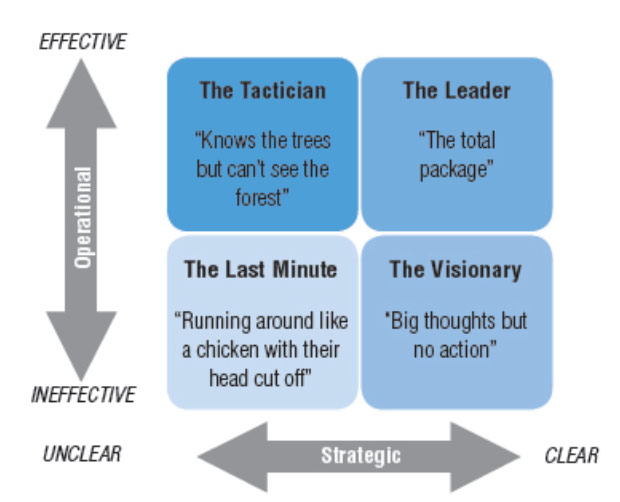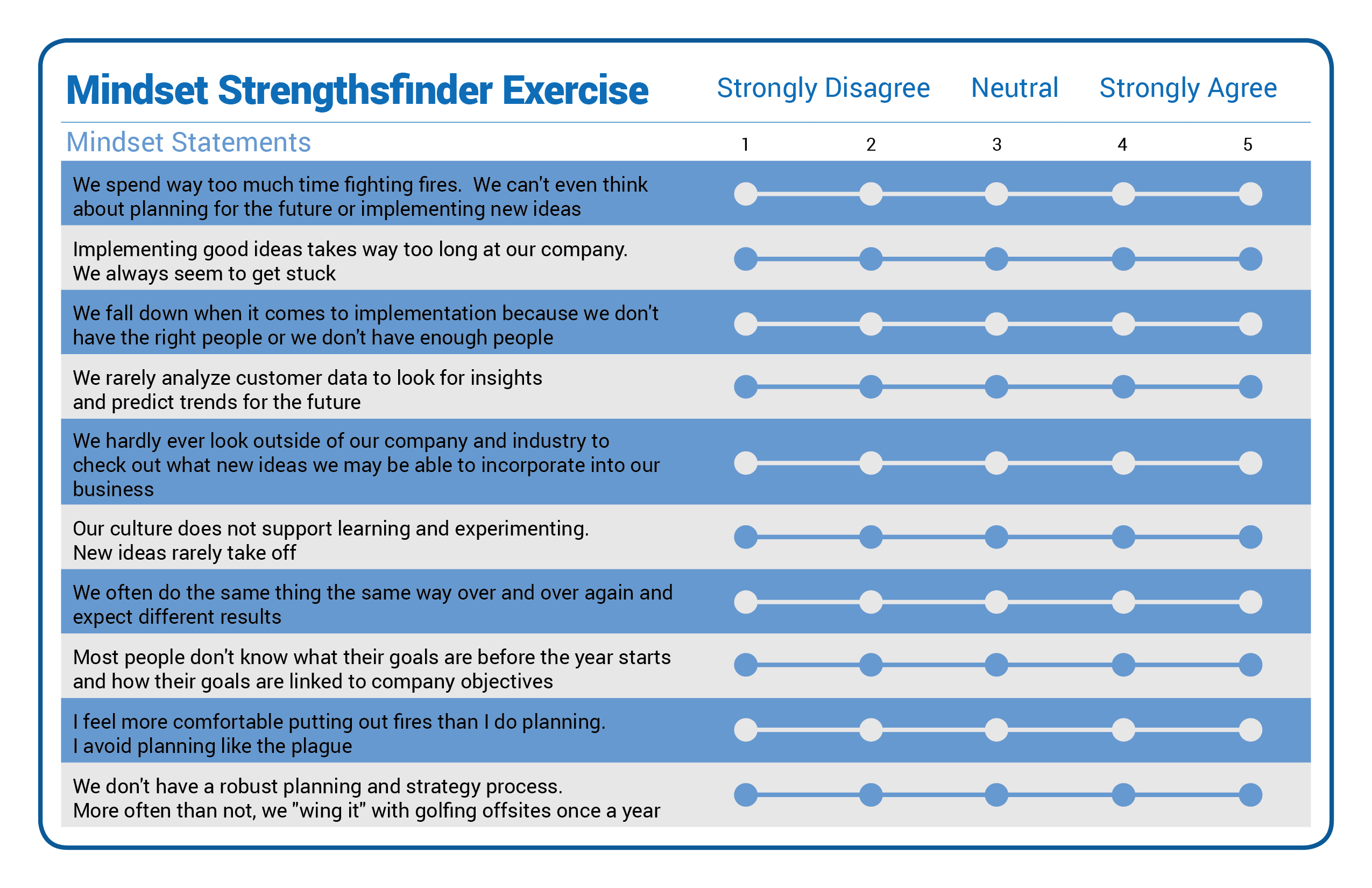Is Your Leadership Style Creating Growth or Limiting It?
Every day, we make decisions about how our time is allocated—which tasks to prioritize, which to put on the back burner, and which to let fall by the wayside. Those small decisions ultimately reveal an underlying style of leadership.
So what kind of leadership steers your organization? Typically, leaders fall into one of the following categories: the Tactician, the Last Minute Individual, the Visionary, or the true Leader. Take a look below and ask yourself this question: where does your leadership team live today?

We have all worked with leaders in each one of these boxes. We have seen leaders that run around like chickens with their heads cut off, or so concerned with minute details that they miss the forest for the trees. If we’re being perfectly honest (which is hard, but necessary), we, too, have probably been that very leader at some point along the way.
The goal is not to play the blame game, but to understand the ways in which a particular leadership style impacts everything from sales and growth to innovation and company culture. Sometimes problems, which seem to arise in other areas of the business—like flat sales, stagnating growth, or failure to differentiate a product from the competition—may actually be rooted in the challenges of leadership. Fortunately, leadership mindset is something that can be transformed.
Take, for example, one of our star clients, the President of his company. When we came on board, he was wearing many different hats. Not only was he the President, but also the VP of Sales and the company’s top sales representative. Each of these roles demanded all of his time. As a result, his leadership style became reactive. He could barely catch his breath between the myriad tasks of sales, managing his team, and putting out daily fires. To complicate things further, he believed that his leadership style was responsible for all the company’s profits. While the company had steadily grown sales in the low single digits for years, our President was missing BIG opportunities that were right under his nose. His tight, controlling leadership style actually limited growth opportunities and stifled innovation. After working together to identify the largest obstacle to growth (the very fact that the President wore way too many hats), we were able to guide him toward a more effective leadership mindset, one in which he could articulate a clearer vision for the future, enlist other leaders to take more ownership and develop a coherent strategy to achieve it. The growth that followed was dramatic—over 100% net income two years in a row and a partnership with a Fortune 100 organization that will deliver dividends for years to come.
Put simply, the real danger to leadership is the reactive mindset. If you find yourself constantly jumping in the car to resolve customer issues, or putting out fires that should fall to your team to fight, or racing over to China last minute to check on product quality, there are probably growth opportunities—perhaps enormous ones—that you simply fail to see. And if you, the leader, aren’t focusing on strategy and big growth opportunities, who is? So how do you make the shift into a leadership mindset?
We believe it starts with your vision for growth.
In our experience, leaders sometimes shy away from the work of creating a vision for the company because it can seem intangible or ‘soft,’ while other issues feel more urgent and concrete, like delving into the latest report, focusing on product, meeting with team members, or communicating with clients. But without vision, any strategy begins to feel like a captain-less ship—no one is at the helm.
If you aren’t already executing on a unified vision for your company, we’ve created some great resources to get you started. But don’t just take our word for it. Marc Benioff, the Founder and CEO of Salesforce, attributes the success of his company to the cohesion he was able to build around vision and strategy in the early days of his business. From the outset, he created a heuristic, which he calls V2MOM (Vision, Values, Methods, Obstacles and Measures), which made it easier to avoid a reactive leadership mindset in favor of a creative and empowering one. As Benioff says, V2MOM is essentially “an exercise in awareness in which the result is total alignment.”
To maximize your ROI on this article, we leave you with one important task: take a good hard look at the leadership in your organization. Before you revamp your sales team, or slash prices to keep pace with your competitors, make sure that you’ve done everything you can to shift out of a reactive leadership style into a forward-thinking, strategic mindset. We have a quick quiz below to help you identify where your leadership may be today. When you make the shift to lead with a mindset focused on growth and innovation, you’ll be surprised at how the rest of business will follow.

So, how did you do?
- If you scored mostly 4s and 5s, red alert! You are leading your organization with a reactive mindset and may be limiting your potential for growth.
- If you scored mostly 3s, you are likely shifting back and forth between a reactive mindset and a leadership mindset. This is very common. Take a hard look at your reactive areas and think about how you may be able to shift into a leadership mindset to drive even more growth.
- If you scored mostly 2s and 1s, you are leading your organization with a leadership mindset! However, one leadership mindset in an organization is not enough. You need to build a growth mindset culture across your entire organization. Take a look at our Mindset initiative to learn more about out how your team stacks up



